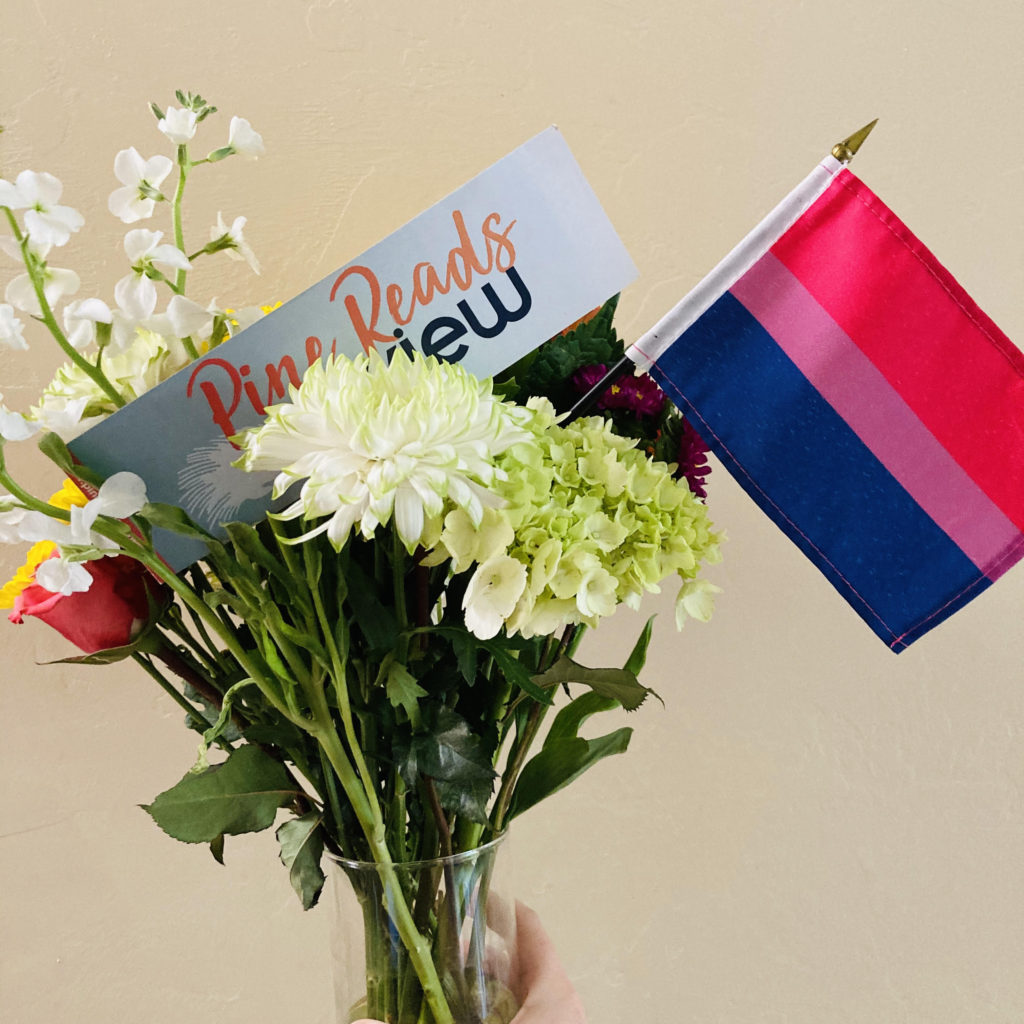
Spoilers ahead for The Henna Wars by Adiba Jaigirdar (Page Street Kids, 2020) and Music from Another World by Robin Talley (Inkyard Press, 2020).
As today is Bisexual Visibility Day, it’s time to celebrate all the fabulous bi readers and characters out there! In case you aren’t familiar with the term, bisexuality is a plural sexuality where a person is sexually and romantically attracted to two or more genders (the “B” in LGBT). What preferences someone has is unique to each bisexual person, but that is a broad definition.
Now, I want to dive into some semantics here before we talk about bisexual representation young adult lit: why is today called bisexual visibility day, and not bisexual pride day? Well, bisexuality is something not often talked about or portrayed in mainstream media. Now you may be thinking: well, of course it isn’t, because any kind of queer representation is hard to come by. This is true, but the bisexual person still often remains an outsider, even within LGBTQ+ communities. As such, there are many stereotypes about bisexual people, like that they aren’t “gay enough,” want attention, or are less likely to be faithful in a monogamous relationship—just to name a few. So, while cisgendered gay and lesbian characters occasionally slide into mainstream media as characters (tokenized and stereotyped, or not) bisexual representation can be even harder to find in some situations.
So, where do we find it in YA? Two books recently reviewed by Pine Reads that come to mind are The Henna Wars by Adiba Jaigirdar (Page Street Kids, 2020) and Music from Another World by Robin Talley (Inkyard Press, 2020). Both of these books center on budding teen romances between two girls, both struggling to come to terms with their sexuality with one being a lesbian and the other being bisexual. In The Henna Wars, the story is told from Nishat’s perspective as she nurses a budding crush on her rival-turned-friend, Flávia, who is bisexual. In this book, I think it’s valuable that a bisexual girl can be shown in a relationship with a lesbian girl without pointing out painful stereotypes that some lesbians have against bisexual women (mainly centering around them being unfaithful or untrustworthy). However, The Henna Wars does not primarily focus around bisexuality—other than the brief mention that Flávia has had boyfriends before dating Nishat—which is completely understandable, since Nishat is the main protagonist.
Music From Another World focuses a bit more on the bisexual conundrum. Tammy and Sharon become pen pals through their respective conservative Christian schools, but little do they know, at first, that they’re both coming to terms with their sexualities. Tammy figures out relatively quickly in the book that she is a lesbian, whereas Sharon goes through a lot more internal questioning. The fact of the matter is that Sharon, like many people, didn’t realize bisexuality is even an option. She struggled with the fact that she had a boyfriend, who she had real feelings for, but could still imagine herself kissing her favorite female punk singer. This depiction of bisexuality really resonated with me because it was how I struggled to come to terms with myself. I liked boys, so I wasn’t a lesbian, therefore girls were not an option. As I have come to learn as an adult, this is just not true.
Another fault of media and even more inclusive YA literature is that bisexual boys and men are even more invisible than women. We often expect that men are just straight or gay, and bisexual men are sometimes labeled as “just afraid to come out,” similar to how bisexual girls and women are “probably just straight.” One young adult novel that has an unapologetically bi male protagonist is The Bane Chronicles (Margaret K. McElderry Books, 2014) by Cassandra Clare. This isn’t a super recent title, but a spin-off of The Mortal Instruments series in which Magnus Bane is also a character. Magnus Bane is a vibrant, dynamic immortal warlock in the Shadowhunters universe, but learning his in-depth history in this book makes him out to be an even more interesting character. It isn’t exactly a coming-of-age story focused on bisexuality, as he is —well, a thousand years old or so—but it is still representation.
Furthermore, this is not meant to be an exhaustive list of bisexual-inclusive titles in young adult literature, but rather a conversation about how bisexual people can be represented in media for this age group. I hope that in the coming years we will have more fully-developped bisexual characters in all kinds of media.
Regardless of whether you are reading a book with bisexual representation right now, happy visibilty day to you all the same.
PRR Writer, Grace Kennedy
Comments are closed.
Well written and explanatory. Color me more informed than before. The real shame of any kind of non-hetero relationship is, that some people find it shameful.
Great post and discussion on bisexuality and the media surrounding it. I enjoyed the book recommendations as they were some I have never heard of before and it can get exhausting hearing the same book titles used to portray an identity that is much more vast than that. Happy (late) bi visibility day!